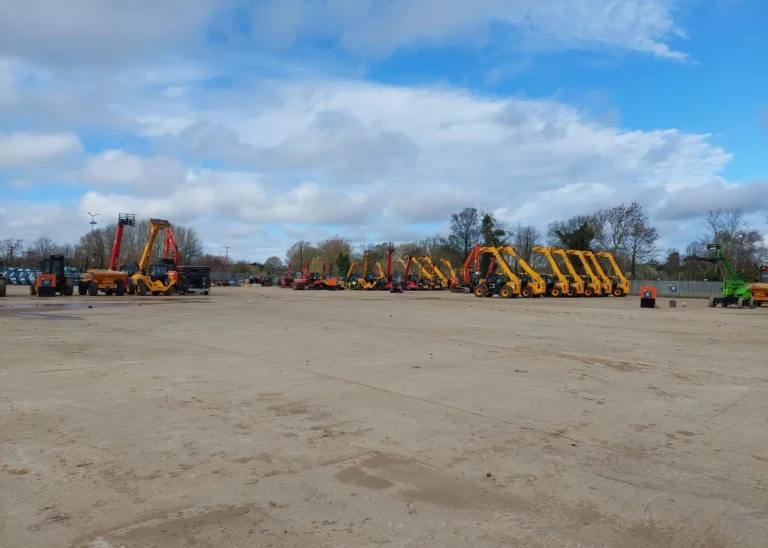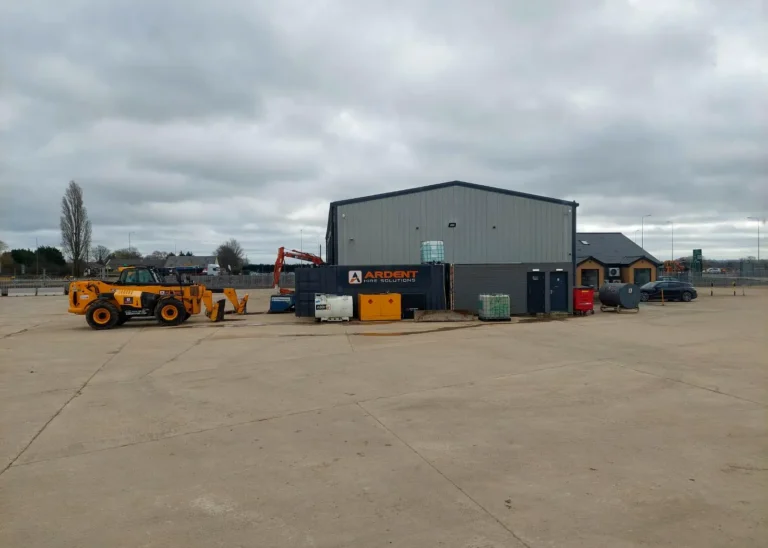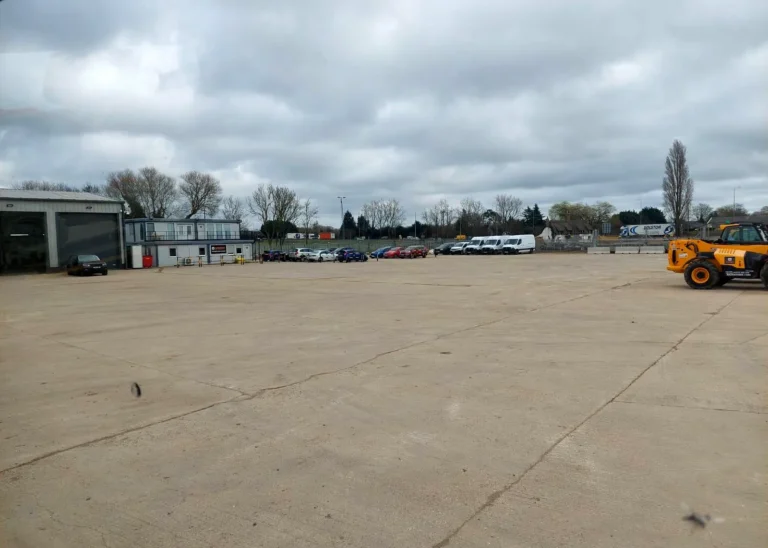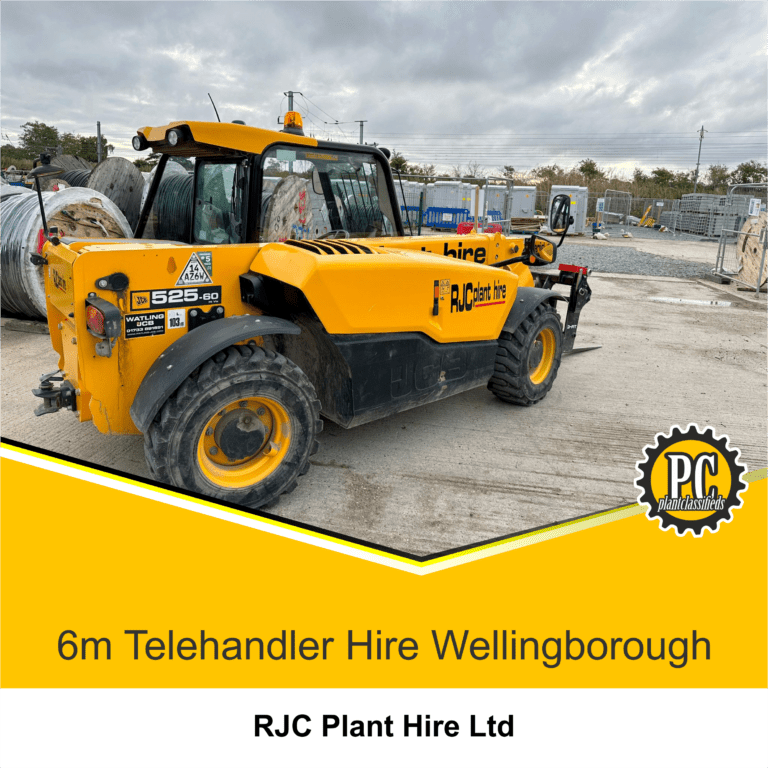Fuel Consumption JCB 525-60
Fuel Consumption Figures for the 6 Metre JCB Telehandler
Assessing the Fuel Consumption JCB 525-60 with a Stage 5 Engine
JCB, a globally recognised manufacturer of construction equipment, is celebrated for its continuous innovations in the telehandler range, emphasising enhanced efficiency and sustainability.
One of the standout offerings in this range is the JCB 525-60 Hi Viz telehandler. Equipped with a stage 5 engine and hydrostatic transmission, this telescopic handler is lauded for its power, versatility, and productivity, making it an ideal choice for a wide array of construction projects.
This article presents a comprehensive review of the fuel consumption of the JCB 525-60, investigating its variation under different operating conditions. It specifically focuses on the influence of auxiliary systems like air conditioning and the role of hydrostatic transmission in fuel efficiency.
The JCB 525-60’s stage 5 engine meets stringent emission standards without sacrificing its robust performance. Nevertheless, factors such as load, operating conditions, use of auxiliary systems like air conditioning, and the efficiency of the transmission system can significantly vary the energy use and subsequent fuel consumption of any construction equipment.
The hydrostatic transmission of the JCB 525-60 plays a pivotal role in its fuel efficiency. It delivers continuous power to the wheels without gear shifts, optimising fuel use across different workload intensities. For tasks not involving heavy construction, such as landscaping or light industrial work, the machine showcases impressive fuel efficiency. When operating the air conditioning system under low to medium loads, the expected average fuel consumption is around 5.5 litres per hour.
The fuel consumption JCB 525-60 based on fuel usage intensity is as follows:
| Fuel Consumption Low | 3 – 5 Litres per hour |
| Fuel Consumption Medium | 5 – 7 Litres per hour |
| Fuel Consumption High | 7 – 9 Litres per hour |
However, for more demanding housing projects requiring continuous operation under heavy loads, fuel consumption increases to between 7 and 9 litres per hour. Despite the heavier workload, this fuel consumption rate is relatively efficient, showcasing the benefits of the hydrostatic transmission system in demanding operating conditions.
Fuel consumption rates can significantly vary based on several factors such as operator behaviour, maintenance schedules, and ambient conditions. For instance, the machine burns approximately 1.95 litres of fuel per hour, even when idle.
Despite the smooth power delivery of the JCB 525-60’s hydrostatic transmission, it can struggle under challenging conditions, such as muddy terrains. Larger models that are better equipped for such terrains tend to perform more efficiently under the same conditions. For example, larger 9-17m machines carrying the same load over muddy terrain would consume less fuel than a 6m model.
The Fuel Consumption JCB 525-60, with its stage 5 engine and hydrostatic transmission, exhibits a remarkable balance between performance and fuel efficiency. Its intelligent design and innovative technology make it a reliable choice for various projects, delivering robust performance while optimising fuel consumption.
Whether you’re working on light landscaping tasks or more intensive construction projects, the JCB 525-60 stands as a testament to JCB’s commitment to delivering robust, efficient, and sustainable construction solutions.
Additionally, check out our detailed article on backhoe loader fuel consumption guide.
We Invite You to List You Plant Equipment for Hire on PlantClassifieds Directory
Search for Telehandler Rental Services Near You
- Plant Hire
- Plant Companies
- prev
- next



Ardent Hire Chawston Depot: New Super Hub 
- 18/03/2024
- Great North Road
- Plant Hire
- +13 Excavators Mini (0.8–5 tonnes), Excavators Midi (6-12 tonnes), Telehandlers, Telehandlers Rotating, Forklifts, Rough Terrain Forklifts, Dumpers (site), Dumpers (Cabbed), Compaction Rollers, Generators, Attachment Hire, Mobile Elevated Work Platforms (MEWPs), Diesel Bowsers


Wellingborough Nationwide Platforms: Comprehensive Local Access Hire 
- 13/12/2023
- Sidegate Lane
- Scissor Lifts
- +1 Telehandlers

DA Johnstone Plant Hire Ltd: Safety First 
- 28/11/2023
- Longhirst
- Excavators Mini (0.8–5 tonnes)
- +7 Excavators Midi (6-12 tonnes), Excavators Crawler (13-44 tonnes), Dumpers (site), Telehandlers, Compaction Rollers, Mobile Crushers, Screens




